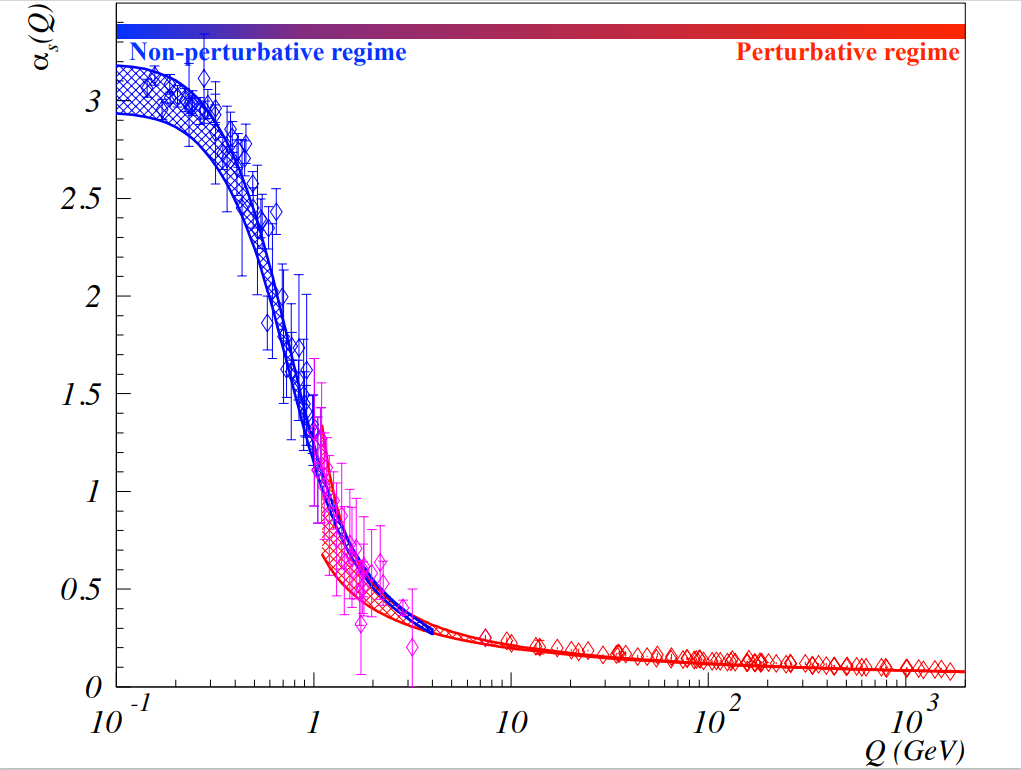EPJ C: Markus Elsing new Editor-in-Chief for Computing, Software and Data Science
- Details
- Published on 28 January 2025

The publishers of The European Physical Journal C – Particles and Fields are pleased to announce the appointment of Dr Markus Elsing as Editor-in-Chief for the newly created section on Computing, Software and Data Science as of January 2025.
Markus Elsing is a senior physicist at CERN. For over 20 years he has been leading the CERN group on Software and Computing in the ATLAS experiment. His main scientific interest is in pattern recognition, Machine Learning techniques and in precision physics at the LHC. He is organiser of the CERN Data Science Seminars and deputy-director of the CERN Schools of Physics.
EPJ C: Susha Parameswaran appointed Guest Editor for String Phenomenology
- Details
- Published on 18 October 2024

EPJ C is pleased to announce the appointment of Susha Parameswaran as the journal’s Guest Editor for String Phenomenology. Susha Parameswaran is a theoretical physicist based in the UK at the University of Liverpool.
Her research interests are in string theory and its applications and potential implications across particle physics and cosmology.
Together with Ignatios Antoniadis, Associate Editor of EPJC, she will supervise the long-term topical collection which has now opened for submissions:
String theory predictions for astroparticle and collider physics, and beyond
EPJ C Highlight - The ALICE experiment – A journey through QCD
- Details
- Published on 04 September 2024

The comprehensive review article “The ALICE experiment – A journey through QCD” has been recently published in the European Physical Journal C (EPJ C).
As of today, QCD is a gauge theory describing the interactions of quarks and gluons, the carriers of the strong force in analogy to the photon in electromagnetic processes. There is, however, a fundamental difference regarding the underling gauge symmetry, which is nonabelian in contrast to the one governing electromagnetic processes. Consequently, the strong force has the outstanding feature that its strength increases with increasing distance, resulting in a phenomenology of quark and gluon interactions depending upon the distance scale. In experiments where small distances are probed, the quarks and gluons behave like quasi-free elementary particles. Such processes can be described theoretically by perturbative methods; otherwise the quarks and gluons are confined, forming a small complex system inside a hadron, and lattice methods are required to describe the processes. In hindsight it becomes obvious why the searches for free quarks during the 1960s were doomed to fail.
EPJ C: Francesco Forti new Editor-in-Chief for Experimental Physics I: Accelerator Based High-Energy Physics
- Details
- Published on 15 December 2023

The publishers of The European Physical Journal C – Particles and Fields are pleased to announce the appointment of Professor Francesco Forti as new Editor-in-Chief for Experimental Physics I: Accelerator Based High-Energy Physics, replacing Professor Günther Dissertori as of 1 January 2024.
Francesco Forti is Professor of Experimental Physics at the “Enrico Fermi” Physics Department of the Pisa University. His main scientific interests are in flavor physics and particle physics instrumentation. He is currently working in the Belle II collaboration at KEK and member of the ICFA Instrumentation, Innovation and Development Panel.
EPJ C Highlight - Celebrating 50 years of QCD with a comprehensive review
- Details
- Published on 13 December 2023

A series of key experiments performed about 50 years ago revealed the eminent role of gauge theories. Two theories were formulated: the electroweak theory and the strong interaction theory QCD. An extensive worldwide research programme has since been set up and has step by step corroborated their predictions, while alternative theoretical attempts have been ruled out. Today these theories are well established and represent the cornerstones of the Standard Model.
The main authors, Franz Groß and Eberhard Klempt, succeeded in gathering experts to write articles covering all aspects of the vast field of strong interaction processes, described by Quantum Chromodynamics QCD, the theory of strong interactions. The fruit of their labours is a comprehensive review, ca. 650 pages long, published in the European Physical Journal C (EPJ C). The major aspects are outlined in 14 chapters, each of which is devoted to a specific topic. The authors’ goal was to provide general and detailed insights into both experiment and theory, for the benefit of research students and other interested readers alike.
EPJ C: Emilian Dudas new Editor-in-Chief for Theoretical Physics III: Quantum Field Theory and Gravity - Fundamental and Formal Aspects
- Details
- Published on 31 October 2023

The publishers of The European Physical Journal C – Particles and Fields are pleased to announce the appointment of Professor Emilian Dudas as new Editor-in-Chief for Theoretical Physics III: Quantum Field Theory and Gravity - Fundamental and Formal Aspects, replacing Professor Kostas Skenderis as of 1 November 2023.
Emilian Dudas is Directeur de Recherche at CNRS at the Centre de Physique Théorique of Ecole Polytechnique in France, where he is also teaching at graduate level. He is working in String Phenomenology, String Theory and their applications to Particle Physics and Cosmology.
EPJ C Highlight: Exploring the duality of gravity and gauge theory
- Details
- Published on 03 November 2022

This EPJ C Topical Collection presents a series of reviews showcasing the latest developments and applications of gauge/gravity duality, and aims at dissemination to a wider physics community in a way that enables building upon these concepts.
The gauge/gravity duality states that gravity and quantum spacetime emerges, i.e. can be reconstructed from a quantum gauge theory living at the boundary. Over the past 25 years, this duality, with concrete instances uncovered by string theory, has revolutionised our understanding of systems ranging from black holes, to matter made up of strongly interacting quantum particles featuring intricate webs of entanglement. In this Topical Collection, the journal EPJ C presents a collection of articles reviewing the latest advances in the fundamental understanding of this duality and its groundbreaking applications.
EPJ C Topical Issue on New frontiers in holographic duality: From quantum complexity and black holes to hydrodynamics and neutron stars
- Details
- Published on 20 October 2022

Guest Editor: Ayan Mukhopadhyay
Over the last 25 years, holographic duality has revolutionised our understanding of gauge theories, quantum many-body systems and also quantum black holes. This topical issue is a collection of review articles on recent advances in fundamentals of holographic duality and its applications with special focus on a few areas where it is inter-disciplinary to a large measure. The aim is to provide a sufficient background on relevant phenomenology and other theoretical areas such as quantum information theory to researchers whose primary expertise is in quantum fields, strings and gravity, and also the necessary concepts and methods of holography to researchers in other fields, so that these recent developments could be grasped and hopefully further developed by a wider community.
EPJ C: Giulia Zanderighi new Editor-in-Chief for Theoretical Physics I: Phenomenology of the Standard Model and Beyond
- Details
- Published on 02 May 2022

The publishers of The European Physical Journal C – Particles and Fields are pleased to announce the appointment of Professor Giulia Zanderighi as new Editor-in-Chief for Theoretical Physics I: Phenomenology of the Standard Model and Beyond, replacing Professor Dieter Zeppenfeld as of 1 May 2022.
Giulia Zanderighi is Director at the Max Planck Institute for Physics and heads the department “Novel Computational Methods in Particle Physics”. She also holds a Liesel Beckmann Professorship at the Technische University in Munich. Her research focusses on collider particle physics.
EPJ C: Prof. Laura Baudis awarded with the 2022 Charpak-Ritz Prize
- Details
- Published on 08 April 2022

Congratulations to Laura Baudis, Associate Editor of EPJC and former Editor-in-Chief of the section Experimental Astroparticle Physics from 2016 to 2021, for this special distinction. This prize recognizes her “leadership in international astro-particle physics collaborations, outreach activities and seminal contributions to dark matter research”. A full account can be found here.




